
|
Broad Ripple Random Ripplings

The news from Broad Ripple
Brought to you by The Broad Ripple Gazette
(Delivering the news since 2004, every two weeks)

|
| Brought to you by: |

|

|

|

|

|

|
Converted from paper version of the Broad Ripple Gazette (v12n25)
Everything you always wanted to know about the canal...Part Seven
posted: Dec. 18, 2015
For those readers just discovering this series on the canal now in its 7th part, I will explain why the canal is important and why the Gazette is doing this series. The dam that created the Central Canal was built on the White River in 1936 and the Town of Broad Ripple grew up around it. It is why we are here today. For years the canal has supplied the City of Indianapolis with 60% of its fresh water which is processed for our clean water supply.
Continuing with the dredging system in the canal. . . This system, which has since been removed, included a dredging boat with a hose to the shore. Large pumps along the canal pumped the silt- and weed root-laden water through large plastic piping that ran along the waterline of the canal and exited in huge silt bags by the Butler athletic field and behind the Riviera Club. The clean water seeped through the bags and went back into the canal.
Ed Malone, director of water production at Citizens, added, "We're removing the sediment, capturing the organics and the debris, and putting the super-native, clean water back into the canal."
I asked, "So the cutting is over? It's all dredging now?"
Ed said, "Well, the dredging is going on right now, eventually we may have to go back to cutting. But for right now the dredging is helping us, in terms of it's not allowing [pond weeds] to re-propagate."
"But new stuff (milfoil seeds and such) is coming in all the time from the river," I added.
"Yes, but since we're removing the sediment and removing the root balls for the plant itself, it's not as easy for it to [take root]."
I asked, "Is it something that is going to end, or is this like an on-going thing?"
Edwin Morris, operations and maintenance supervisor (oversees all canal activities) at Citizens, answered, "The project should be coming to an end by the end of this summer (2015). First of the fall they should be done, completely done, the majority of the canal. They've still got the area down south of 30th Street coming this direction (south). But from 30th to Broad Ripple should be complete this year."
Ed added, "The benefit of restoring the canal's carrying capacity is that it is a huge advantage for us to be able to convey that water without pumping it. So, the more water we can convey to this treatment plant without having to supplement it by pumping the better off it is for us."
I piped in, "And us (the customers), we would have to pay for that pumping."
"Yes," Ed said. "In 2012, we had issues with the carrying velocity and the cross sections of the canal. We actually had to put pumps, up between the Monon bridge and the Westfield bridge. We had pumps in the horizontal position, trying to increase the velocity going down the canal."
I recalled, "Oh yes, and it caused a lot of. . . "
Ed jumped in, "Turbulence right there (pointing at the photo I brought from 2012 - see photo on page 1). That was to increase the carrying velocity...it was to increase the velocity coming down the canal to overcome the head that was there because of the restrictions of the cross section. What we're doing with the dredging is restoring that cross section so that we don't have the hydraulic losses coming down the canal."
In this 2012 photo the turbulence from the temporary pumps can be seen below and to the right of the final N in MONON on the bridge.
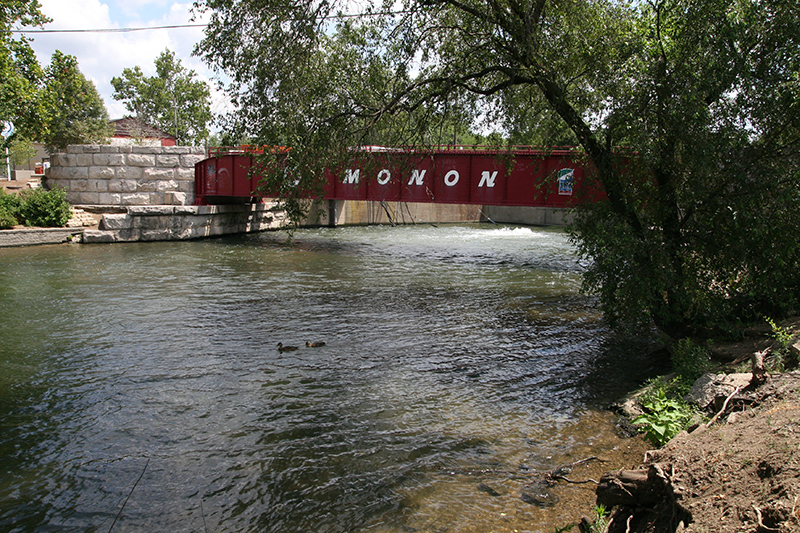
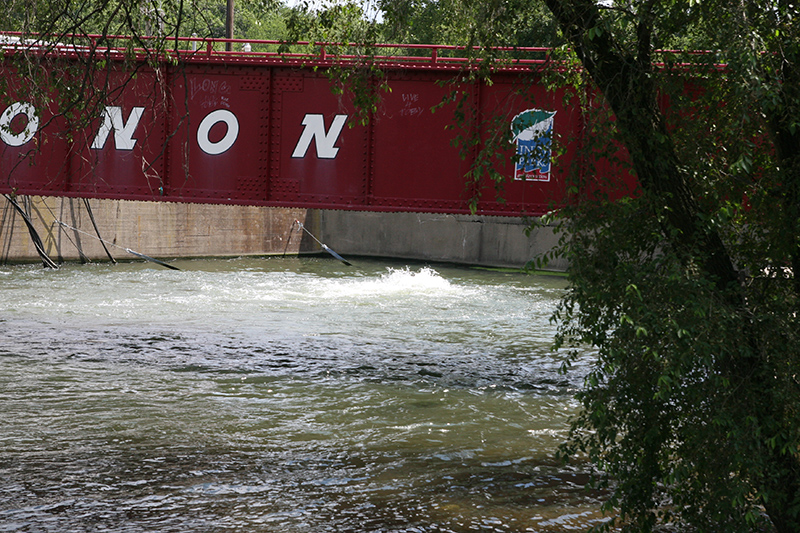
"There's a limitation on how much the river can push down the canal?" I asked.
"Yes," Ed replied, "head (the pressure of the water from gravity) is very important to us. The head that we can maintain is very important to us. We're dealing with less than two feet, basically from here...in seven miles (from Broad Ripple to treatment plant)...only two feet of head we're dealing with. That's not a lot of incline."
While we were talking about the silt bags at the Riviera Club, I asked about the large water processing building that is right there, behind the diving tank.
The sewage pump station behind the Riviera Club

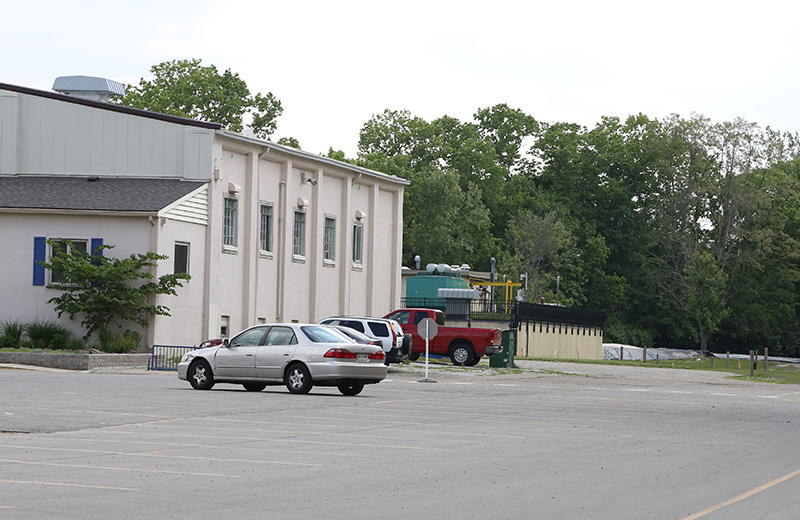
Ed replied, "That building is a sewage pump station. That's a treatment plant actually. That one is ours. That one is what's called the Riviera. It is not only a pump station, but it also has the ability to treat the effluent. It treats the effluent, meaning from the combined sewer overflows before it goes to the river. So that actually treats and has the ability to hold over a million gallons. So, if it's a minor storm event, it will hold all of it and none of it will go to the river. And then, once it has reached its capacity, it holds it, and then pumps it back into the sewer system for treatment. If the flow is more than what can be accommodated in the facility, then it treats what is going to the river as effluent. It does do partial treatment, meaning chlorination."
End of Part Seven
pumps in canal in 2012 causing turbulence
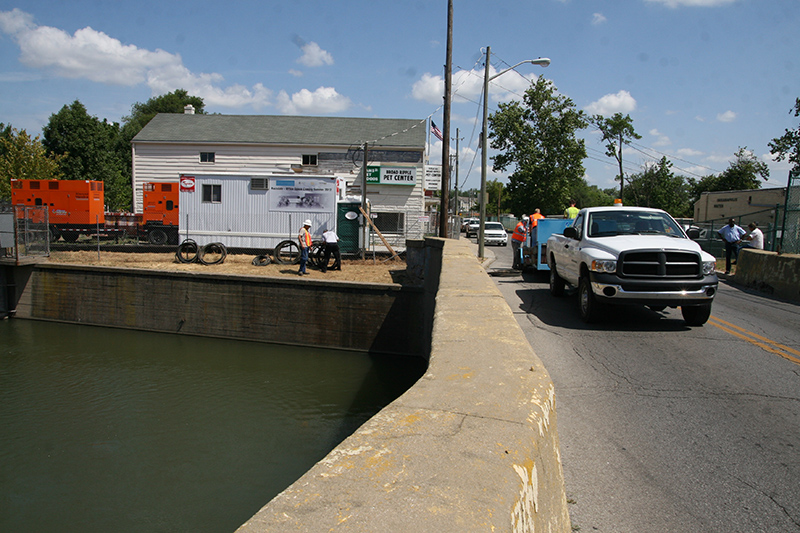
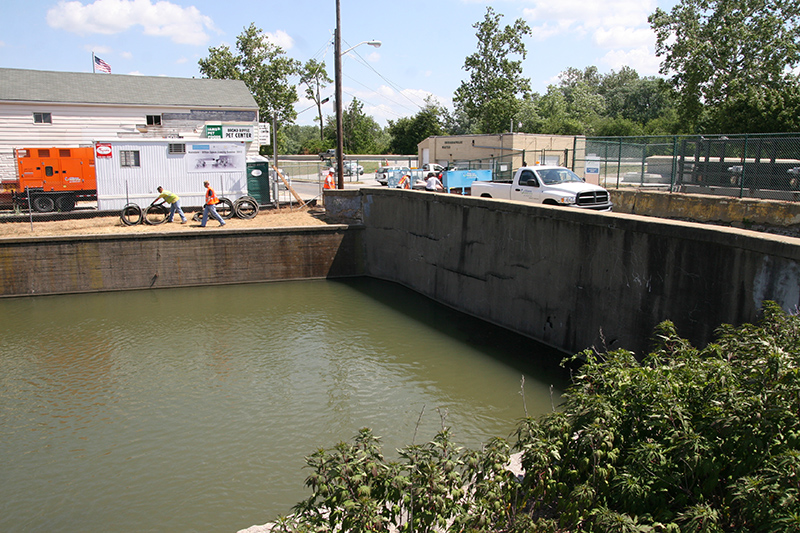
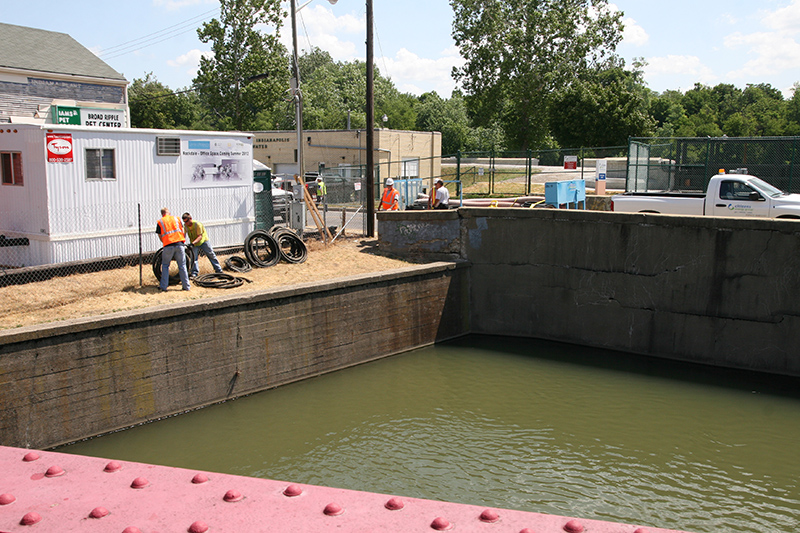
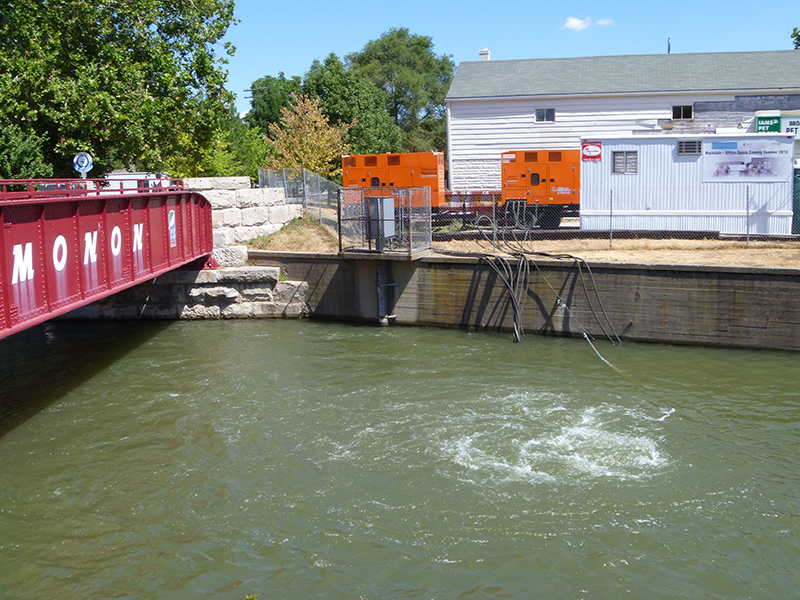
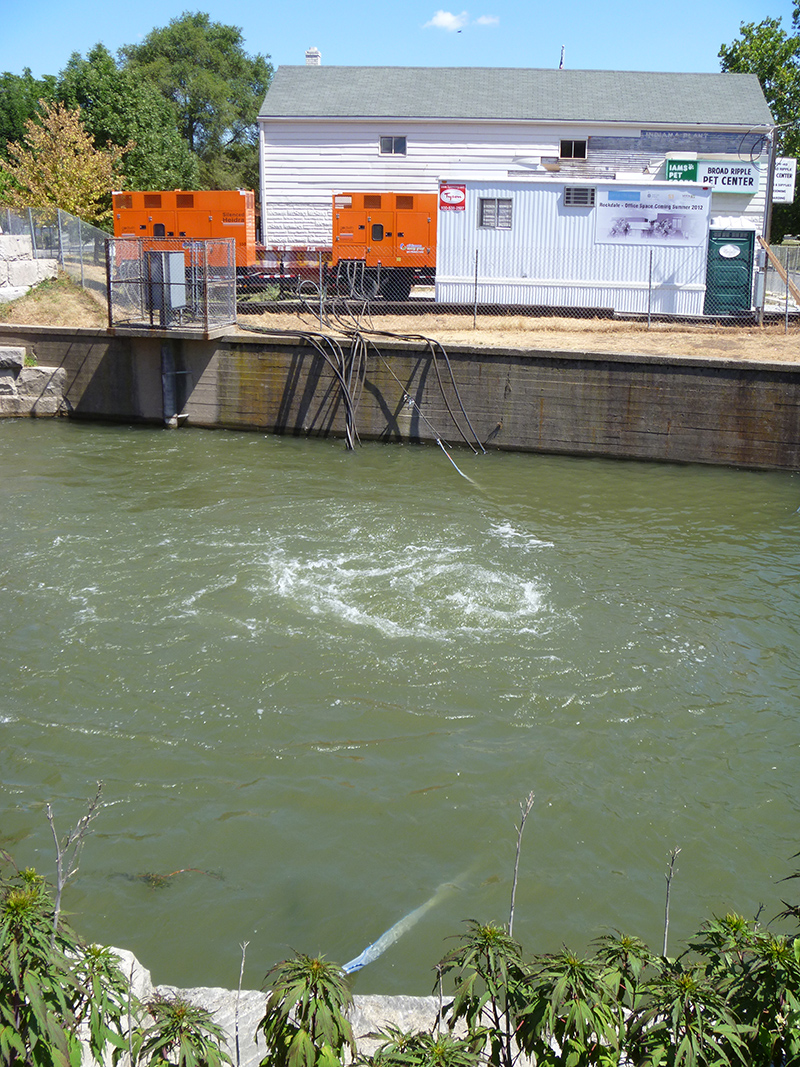
alan@broadripplegazette.com

|

|

|
| Brought to you by: |

|

|

|
| Brought to you by: |

|

|

|


